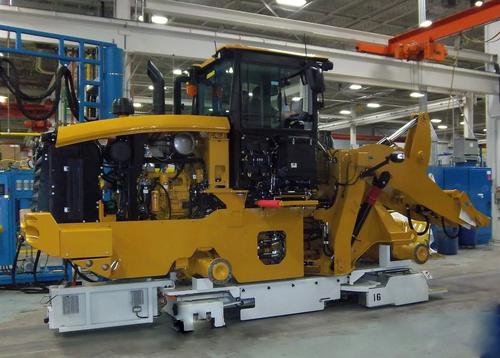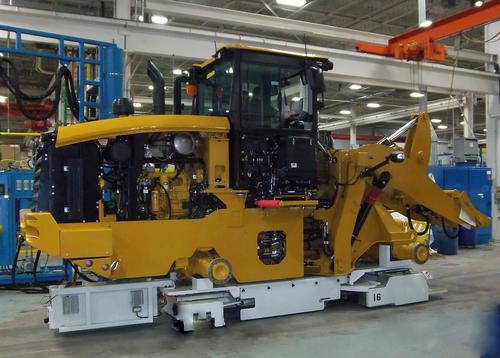Are AGVs Ready for the Assembly Line?
March 16, 2015

A Michigan-based company is putting a new wrinkle on the decades-old concept of using automated guided vehicles (AGVs) on the factory floor. Combining a battery-free design with a smart electronic control scheme, the company is proposing that AGVs be used, not just for material handling, but as a replacement for traditional conveyors on assembly lines.
"This really helps pave the way for flexible, scalable manufacturing," said Rod Emery, vice president of operations for Red Viking, the manufacturing solutions company that designed the new technology. "Your conveyance path is a flat, smooth, clean floor, free of any obstructions or trip hazards."

Known as the WingSpan AGV, the new technology provides an alternative to traditional chain conveyor systems that have been used on assembly lines since the early days of the auto industry. Instead of a chain conveyor, WingSpan uses an inductive power transfer system buried beneath the floor, along with software and a PLC for control. Tractive power is transmitted from the under-floor cable to a power pickup on board the vehicle. Using electric motors, big versions of the vehicles are capable of carrying stunningly large loads -- as much as 60,000 lb. As a result the vehicles have already been used to transport items as large as helicopter transmissions and bulldozers.
Red Viking claims the installation process is far less intensive than that used for chain conveyors. In a white paper on the topic, Emery stated that an 800 m loop of inductive power transfer cable could be installed in about 900 hours, compared to 13,000 hours for a chain drive conveyor system. At a demonstration for journalists in association with the recent Manufacturing in America Symposium, Red Viking engineers said they installed the cable for a test loop in a single weekend.
MORE FROM DESIGN NEWS: Battery-Free AGVs Do the Heavy Lifting
"A traditional conveyance system requires some pretty significant, risky, expensive, and time-consuming changes to the building infrastructure," Emery said at the event. "With this, it's just a matter of adding an AGV."
Each AGV is powered through an onboard Siemens Sitop DC/DC converter and controlled by a Siemens Simatic S7 PLC. "The cable provides power, continuous guidance and communication back the PLC," Emery said. "The supervisory controller acts as a traffic cop and has complete awareness of every AGV on the assembly line, and every product that's on the AGVs."
MORE FROM DESIGN NEWS: Powering Greener, More Efficient Electronics
Emery added that the inductive power technique also offers advantages of traditional battery-powered AGVs. "You could do this with battery power, but it would create additional challenges, such as charging, maintaining, and disposing of batteries, as well as the issue of the battery life itself," he said. "It would also be a challenge getting the (power) density needed to move heavy objects."
Thus far, Red Viking has sold about 100 units into various applications, including aerospace, construction equipment, and automotive assembly. "We believe the assembly line is the sweet spot for this technology," Emery said.
Senior technical editor Chuck Murray has been writing about technology for 31 years. He joined Design News in 1987, and has covered electronics, automation, fluid power, and autos.
About the Author(s)
You May Also Like



